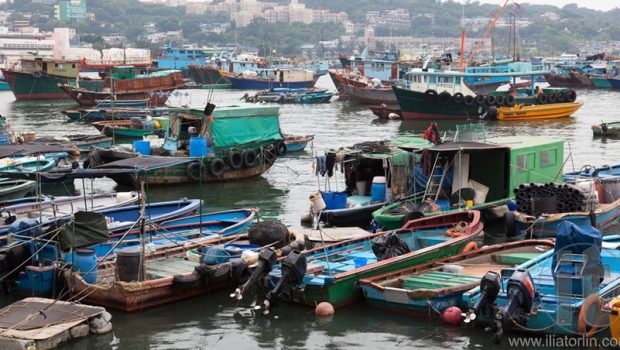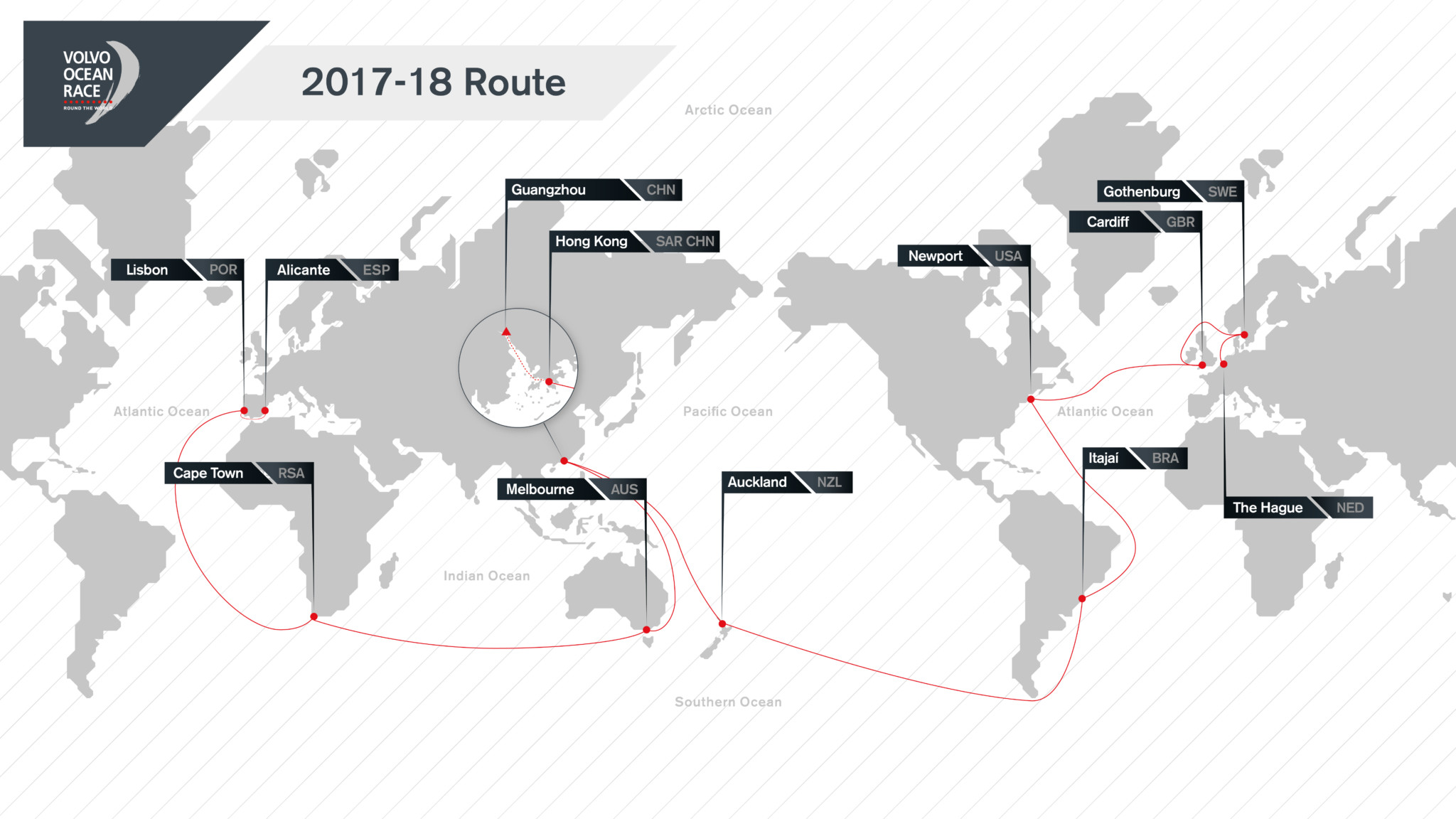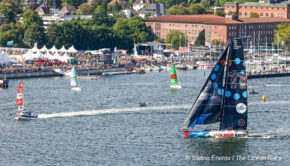Volvo Ocean Race to launch investigation
Published on March 2nd, 2018
Auckland, New Zealand (March 2, 2018) – Following the collision between Vestas 11th Hour Racing and a fishing vessel in the final stages of the racing leg into Hong Kong, the organisers of the Volvo Ocean Race have commissioned an independent report into ocean racing at night in areas of high vessel traffic density, to establish what steps race organisers may take to mitigate risk going forward.
The report will be conducted by an Independent Report Team (IRT), chaired by Rear Admiral Chris Oxenbould AO RAN (Rtd) and assisted by Stan Honey and Chuck Hawley.
Rear Admiral Oxenbould is a former deputy chief of the Australian Navy and an experienced ocean racing yachtsman with a particular expertise in navigation. He is also the former chairman of Australia Sailing’s National Safety Committee.
Renowned current sailor and ocean navigational expert, Stan Honey, who won the Volvo Ocean Race 2005-06 as navigator onboard ABN AMRO ONE, and Chuck Hawley, who is the former chairman of the U.S. Sailing Safety at Sea Committee, will assist Rear Admiral Oxenbould on the report.
The IRT will examine all the issues associated with racing a Volvo Ocean 65, or similar racing boat, at night in areas of high vessel traffic density, drawing on the experiences in recent editions of the Volvo Ocean Race.
Any findings from the report that could benefit the wider sailing community will be released. It is intended that the IRT will make its report available to Volvo Ocean Race by June 2018.
Phil Lawrence, Race Director, stated: “Understandably, there has been a lot of reaction to this incident in the sailing community, but the fact is, it takes time to make a responsible assessment of what could be done differently to minimise risk and increase safety.
“Our sailors, as qualified professionals, understand their responsibilities under the International Regulations for Preventing Collisions at Sea, Racing Rules of Sailing and the Rules of the Volvo Ocean Race.
“As race organisers, we will continue to evaluate safety as we race over the coming months and take the appropriate steps to minimise risk.”
The collision occurred between Vestas 11th Hour Racing and a fishing vessel on January 20, taking place around 30 miles from the Leg 4 finish line in Hong Kong. The impact caused significant damage to the team’s VO65 and sank the other boat, tossing 10 of its people into the water with one fatality.
Now over six weeks later, Lawrence offers additional details:
Why has it taken some time to release more information about the incident?
Sadly, a person died in this incident and in these circumstances an official investigation needed to be carried out by the relevant authorities. The casualty arrived in Hong Kong and the incident itself took place in Chinese waters. We have, therefore, been dealing with two official investigations.
While these investigations are underway there are legal and cultural considerations that limit the amount of information we are able to share publicly. We have now been informed that the investigations by the Hong Kong and mainland China authorities will be closed shortly with no further action to be taken.
Why did you finish the leg in Hong Kong Harbour?
Hong Kong harbour and the surrounding territorial waters are highly regulated with fishing boats subject to restrictions. We were confident that the risks in Hong Kong waters were always well managed.
This incident occurred 30 miles offshore, outside of Hong Kong territorial waters. The fleet still had to navigate the fishing traffic offshore but this is not an uncommon occurrence in these waters. Many different offshore races, both professional and amateur, sail through areas of heavy traffic at times, or start or finish in busy harbours. To that end, we have commissioned an independent report to establish what steps race organisers should take to mitigate risk going forward.
Why was Dongfeng Race Team not diverted to the accident scene?
Vestas 11th Hour Racing communicated to us that this was not necessary – there were enough local vessels on the scene rendering assistance and this was told very clearly to Race Control as Dongfeng approached the area. As a result, we decided to release them to finish the leg.
By the time team AkzoNobel approached the area a couple of hours later, we considered that the Vestas 11th Hour Racing crew had been dealing with a crisis situation for more than two hours and might benefit from the support of a fellow competitor staying in the area, on stand-by, if needed.
AkzoNobel did stand by in support, at our request, but was not needed to render any tangible assistance, and was released to continue to the finish line when Vestas 11th Hour Racing began motoring towards Hong Kong following the conclusion of the rescue.
Why has there been so little information?
I understand Vestas 11th Hour Racing are in a similar position to ourselves with regard to making public statements while authorities are still conducting their investigation. However, the team has issued a more detailed account of what happened today (click here).
There was damage to the Vestas 11th Hour Racing boat in the accident that precluded them from racing in Leg 5 and 6, and the boat was shipped to New Zealand for repairs. Since the boat arrived in New Zealand the team has provided updates on the progress of repairs in anticipation of them re-joining the race.
Is the Volvo Ocean Race in direct contact with the family of the deceased?
Through legal representatives in Hong Kong, we are in contact with the family of the deceased. At all times we have taken advice from our counsel from a cultural perspective, in respect of expressing condolences, providing support and the treatment of those affected by this accident.
Additional details from the team… click here.
Summary of the accident… click here.
The team hopes to relaunch their VO65 in the coming days and will then spend some time practicing and possibly complete an overnight sail. Leg 7 is scheduled to begin March 18. Prior to that the New Zealand In-Port Race is scheduled March 10.
Leg Distance: The race organizers choose to estimate the tactical distance for each leg rather than list the actual distance, an unusual decision that’s revealed once the race starts and the tracker lists the actual distance to finish. The VOR says Leg 7 from Auckland to Itajaí, BRA is 7600 nm whereas the truth is more like 6700 nm.
Race details – Tracker – Scoreboard – Race route – Facebook – YouTube
Overall Results (after 6 of 11 legs)
1. MAPFRE (ESP), Xabi Fernández (ESP), 39 points
2. Dongfeng Race Team (CHN), Charles Caudrelier (FRA), 34
3. Team Sun Hung Kai/Scallywag (HKG), David Witt (AUS), 26
4. Team AkzoNobel (NED), Simeon Tienpont (NED), 23
5. Vestas 11th Hour Racing (DEN/USA), Charlie Enright (USA), 23
6. Team Brunel (NED), Bouwe Bekking (NED), 20
7. Turn the Tide on Plastic (POR), Dee Caffari (GBR), 12
2017-18 Edition: Entered Teams – Skippers
• Team AkzoNobel (NED), Simeon Tienpont (NED)
• Dongfeng Race Team (CHN), Charles Caudrelier (FRA)
• MAPFRE (ESP), Xabi Fernández (ESP)
• Vestas 11th Hour Racing (DEN/USA), Charlie Enright (USA)
• Team Sun Hung Kai/Scallywag (HKG), David Witt (AUS)
• Turn the Tide on Plastic (POR), Dee Caffari (GBR)
• Team Brunel (NED), Bouwe Bekking (NED)
Background: Racing the one design Volvo Ocean 65, the 2017-18 Volvo Ocean Race begins in Alicante, Spain on October 22 2017 with the final finish in The Hague, Netherlands on June 30 2018. In total, the 11-leg race will visit 12 cities in six continents: Alicante, Lisbon, Cape Town, Melbourne, Hong Kong, Guangzhou, Auckland, Itajaí, Newport, Cardiff, Gothenburg, and The Hague. A maximum of eight teams will compete.
Source: Volvo Ocean Race











 We’ll keep your information safe.
We’ll keep your information safe.